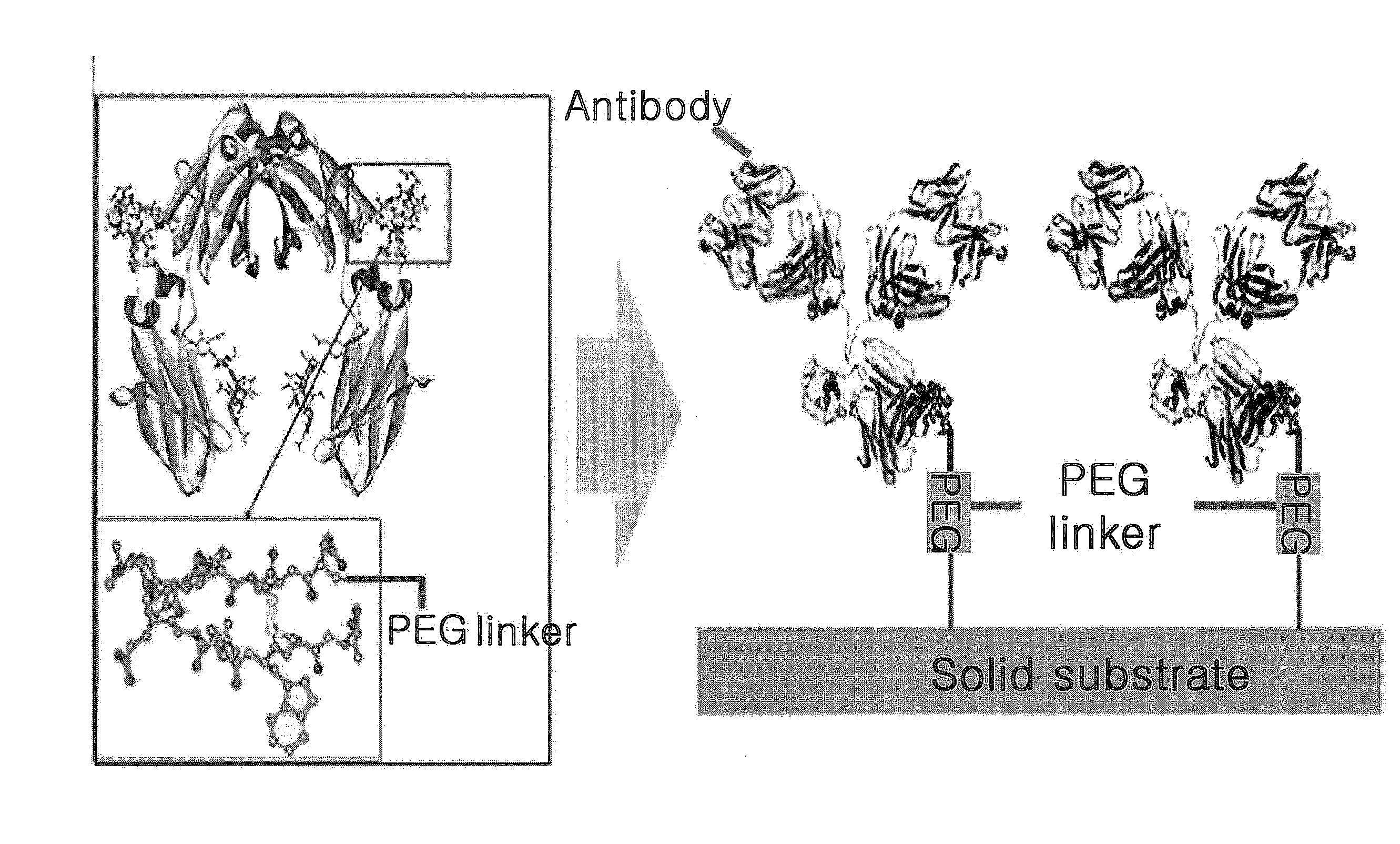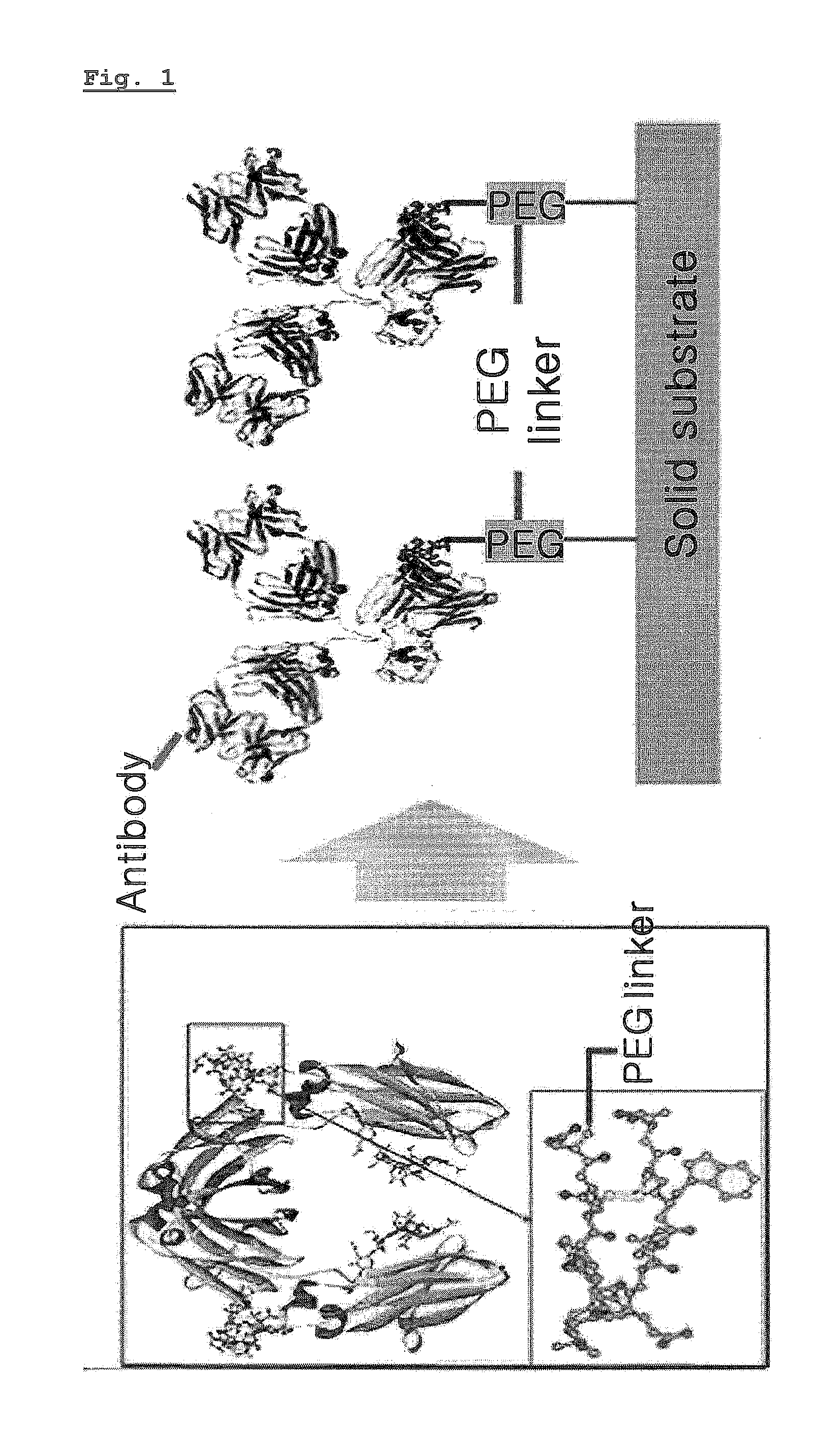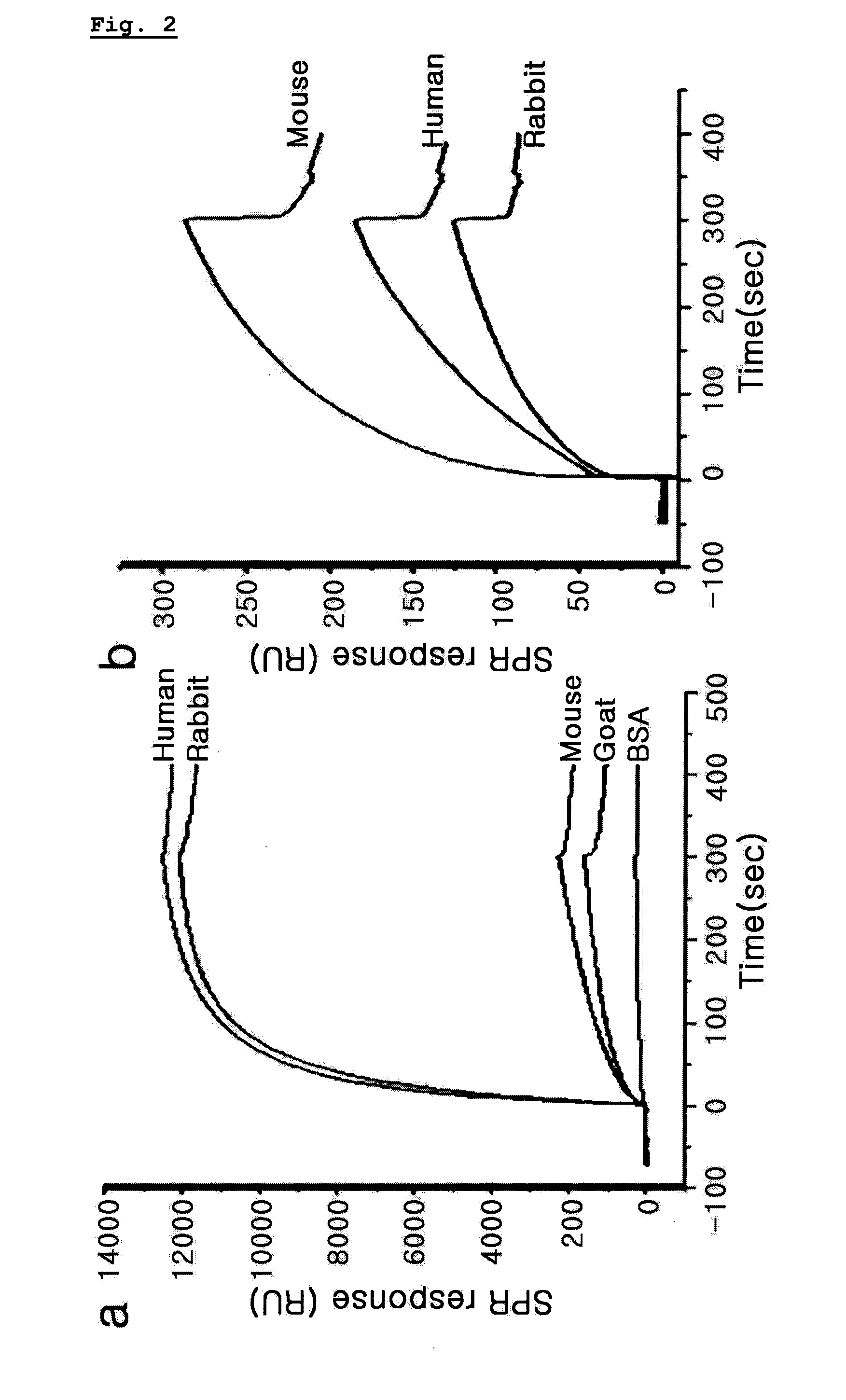Method for preparing antibody monolayers which have controlled orientation using peptide hybrid
a technology of peptide hybrid and antibody monolayer, which is applied in the direction of peptides, peptide/protein ingredients, instruments, etc., can solve the problems of reducing the binding capacity of the immobilized antibody to the target antigen, the immobilization efficiency of antibodies might be reduced, and the random chemical modification of random effects, so as to facilitate the immobilization of antibodies and effectively use the
- Summary
- Abstract
- Description
- Claims
- Application Information
AI Technical Summary
Benefits of technology
Problems solved by technology
Method used
Image
Examples
example 1
[0066]The present inventors prepared the peptide hybrid for protein immobilization from the peptide hybrids represented by formulas 1-3 comprising the peptide containing the amino acid sequence selected from the group consisting of the sequences represented by SEQ. ID. NO: 1-NO: 5 and formula 4 shown in Table 1.
[0067]The peptides having the amino acid sequence selected from the group consisting of the sequences represented by SEQ. ID. NO: 1-NO: 5 and formula 4 (SEQ. ID. NO: 1: DDDC*AWHLGELVWC*T; SEQ. ID. NO: 2: DEDC*AWHLGELVWC*T; SEQ. ID. NO: 3: EEDC*AWHLGELVWC*T; SEQ. ID. NO: 4: EDDC*AWHLGELVWC*T; formula 4: (RTY)4K2KG; SEQ. ID. NO: 5: GHWRGWVS, C*: disulfide bond) are known to be bound to Fc region of human immunoglobulin G (DeLano W L et al., Science 287:1279-1283, 2000; Yang H et al., J Peptide Res 66(Suppl. 1):120-137, 2006; Fassina G et al., J Mol Recognit 11:128-133, 1998). To improve solubility of the hybrid in water-based buffer and to provide e...
example 2
Preparation of Antibody Samples and Reagents
[0068]Various immunoglobulin Gs having different isotypes and origins from human (HIgG1, HIgG2 and HIgG3), rabbit, mouse (MIgGA, MIgG1, MIgG2 and MIgG3) and goat, were purchased from Sigma-Aldrich (USA) along with (3-aminopropyl)trimethoxysilane (APTS), N-hydroxysuccinimide(NHS), 1-ethyl-3-(3-dimethylaminopropyl)carbodiimide (EDC), 2-(N-morpholino)ethanesulfonic acid (MES), ethanolamine and Succinic anhydride-DMF, etc used for the antibody labeling. C-reactive protein (CRP) and rabbit anti-CRP antibody were purchased from Calbiochem (USA). Cys-mono NHS ester used for the antibody labeling was purchased from GE Healthcare (Korea). CM-5 Au sensor chip for the measurement of surface plasmon resonance was purchased from Biacore AB (Sweden), magnetic micro beads (Dynabeads MyOne™ Carboxylic Acid) were purchased from DYNAL (USA), and the glass plate was purchased from Corning (Korea).
example 3
Antibody Binding Capacity of the Peptide Hybrid for Protein Immobilization Immobilized on the Dextran Chip with Controlled Orientation
[0069] Immobilization of the Peptide Hybrid with Controlled Orientation
[0070]The peptide hybrid for protein immobilization prepared in Example 1 was immobilized on a solid substrate having a carboxyl group on its surface.
[0071]PBS containing 0.2 M EDC and 0.05 M NHS was spilled on the dextran CM-5 Au sensor chip (Biacore AB, Sweden) at the speed of 7 μl / minute to activate the carboxyl group on the surface of the sensor chip. Then, PBS containing 100 μM of the peptide hybrid was spilled thereon at the same speed for 30 minutes. The peptide hybrid was bound to the surface via the reaction of the terminal amine group on the sensor chip activated as NHS ester form. The surface area remaining non-reacted with the peptide hybrid was inactivated by using 1 M of ethanolamine solution (pH 8.5).
Measurement of Antibody Binding Capacity
[0072]The chip surface-tre...
PUM
| Property | Measurement | Unit |
|---|---|---|
| Color | aaaaa | aaaaa |
| Molecular weight | aaaaa | aaaaa |
| Fluorescence | aaaaa | aaaaa |
Abstract
Description
Claims
Application Information
 Login to View More
Login to View More - R&D
- Intellectual Property
- Life Sciences
- Materials
- Tech Scout
- Unparalleled Data Quality
- Higher Quality Content
- 60% Fewer Hallucinations
Browse by: Latest US Patents, China's latest patents, Technical Efficacy Thesaurus, Application Domain, Technology Topic, Popular Technical Reports.
© 2025 PatSnap. All rights reserved.Legal|Privacy policy|Modern Slavery Act Transparency Statement|Sitemap|About US| Contact US: help@patsnap.com



